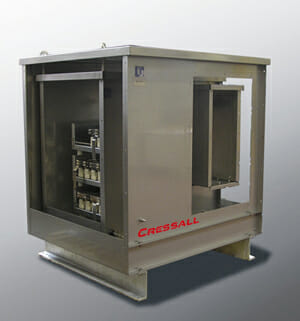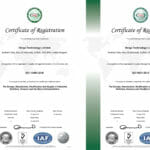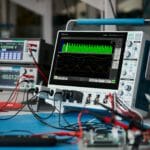Top considerations for building an enclosure
When refining product design, the manufacturer, purchaser and end user will all approach equipment requirements from different perspectives. While the manufacturer may be more concerned with keeping production costs low, the end user will be more interested in the usability and functionality of the final product. Here Simone Bruckner, managing director at power resistor manufacturer Cressall Resistors, explores the top considerations when designing an enclosure for industrial electrical equipment.
For many industries, the product development process follows four key steps: concept initialisation, research and development, design prototyping and full-scale production. During the research stage, the correct questions must be asked to ensure the product is fit for purpose. When designing an enclosure for electrical equipment, this research is usually undertaken when the customer provides an initial specification.
The specification writer may not be aware of all criteria that impact on the enclosure design, therefore it is our responsibility to ask those key questions to establish a comprehensive brief.
Environmental conditions
One of the most important considerations when designing an enclosure is the environment that it will be operating in. At Cressall, we design power resistors for a range of industries including oil and gas, renewable energy, marine and offshore, electricity generation, transmission and distribution. Each one of these industries presents slightly different working conditions.
Selecting the correct material for the enclosure is an important consideration. For many of our own enclosures, the preferred material is 316L stainless steel, which has a good long-term corrosion resistance. We also fabricate enclosures from other grades of stainless steel such as 304 as well as pre-galvanised steel and hot-dip galvanised steel.
In addition, further mechanical considerations exist depending on the installation location of the equipment such as wind loading, ice loading and seismic shock. Where these apply, Cressall uses tools such as CFD (Computational Fluid Dynamics) and FEA (Finite Element Analysis) to assess the proposed design for the geographical parameters, accelerating the design process.
Level of protection provided
While the enclosure’s material protects the majority of its contents, in environments such as marine vessels, ingress protection is vital in stopping dust, moisture and other contaminants from affecting the resistor. The BS EN 60529 standard provides quantified levels of protection for people and the equipment itself from the outside environment. These levels are described by an IP (ingress protection) code number designating protection from liquids and solid objects.
However, this is where the equipment manufacturer can assist the customer who may not understand the full impact that placing a high IP level requirement can have for the enclosure manufacturer. A higher level places tighter restrictions on openings in the enclosure panel work which can restrict ventilation. Therefore, with a thorough understanding of the equipment, the designer can propose a suitable level to meet all requirements.
Fabrication, Assembly and Installation
Many manufacturers design and build products at a central location, from which the assembled equipment is shipped to the end user.
Enclosures can become large pieces of equipment, especially in high voltage applications where the air gap clearances are high. The designer must carefully consider how the enclosure will be fabricated, assembled, shipped and installed to ensure a cost-effective solution is delivered.
Once the enclosure has arrived at its destination, it needs to be installed. This could be at ground level or at an elevated position. Consideration needs to be given to how the enclosure will be lifted into position, for example lifting eyes, lifting beams or forklift channels.
The path to design success
The design and build of an enclosure is not a one-way conversation. As is so often the case, communication in the design phase is critical to future success. While the chosen manufacturer may have the experience to make recommendations and assumptions, the client must also input into the design process.
Communication between all relevant parties coupled with a considered design approach will ensure the electrical enclosure design. Cressall’s in-house highly skilled design team use its experience together with 3D design and simulation techniques to achieve optimised solutions. The companies power resistors are built with quality materials for power resistor enclosures that are built to stand the test of time.








